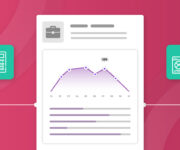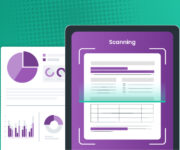Today, a growing number of consumers require funds for personal, or business reasons. The funds may be used for a home renovation, expenses after a job lay-off, or to fund business operations. The value of funds can vary.
Typically, such borrowers apply for a line of credit, which allows them to get access to funds of a pre-determined amount. This is an effective solution that serves the immediate needs of borrowers. On the other hand, banks can capitalise on this need to drive revenues.
In this blog post, we deconstruct the line of credit, and how lenders can leverage six strategies to grow this vertical while effectively managing the risks.
What is a Line of Credit?
A line of credit is a unique type of loan where the borrower can access funds up to a pre-fixed amount.
However, they can withdraw the funds as per their needs. They are only charged interest only on the withdrawn amount, and not the full value of the loan. The flexibility of this arrangement is appealing to borrowers, due to its cost-effectiveness.
This is the key advantage over, say, a personal loan or a business loan, where interest is paid on the full value. The interest rate is also fixed, unlike line of credit loans where it can be variable.
Types of Line of Credit Loans
Typically, borrowers apply for a line of credit when they need access to funds, but cannot predict the exact value of funds they need.
Types of loans comprise:
- A personal line of credit can be used for individual needs such as home renovations, medical expenses, or during job loss.
- A business line of credit helps businesses access funds to improve cash flows, for operational expenses, and to capitalise on market opportunities.
- A secured line of credit is taken for business or personal reasons against collateral such as real estate
6 Best Practices for Line of Credit Applications
Here are six strategies to help lenders scale faster, effectively manage risk, and ensure on-time repayments:
Boost Risk Assessment Capabilities
Unsecured line of credit loans typically do come with some degree of risk. Hence, accurately determining the creditworthiness of borrowers is extremely important.
Lenders can leverage the analytical capabilities of commercial loan management software like Finezza to automate the process. This solution analyses bank statements in depth, segregating every transaction into the relevant inflow or outflow categories.
With such detailed segregation, lenders can gauge the financial behaviours, patterns, and cash flows of the borrowers.
For instance, the analysis can isolate all penalties related to missed EMI payments. Based on the predictive data analysis, the software offers a creditworthiness score. Thus lenders can accurately assess the risk profile and make data-driven decisions.
Detect Potential Fraud Early On
The use of AI-powered solutions can help lenders detect fraud cases, early on. AI and ML have the potential to detect unusual banking transaction patterns, which can be missed by the human eye. These patterns can be flagged quickly for further analysis. For instance, credits and debits of the same value can be a result of circular transactions, made to give the appearance of positive cash flows.
Superior loan management software can also detect minute disparities in documentation and know-your-customer (KYC) data. These discoveries can point to fake documents and identity thefts. The best approach is to weed out loan fraud early on. By doing so, lenders can avoid consequences such as penalties, bankruptcy, and closure of the business.
Customise Line of Credit Products
Line of credit loan applicants need funds for diverse reasons. Hence, the fund values can range from as little as INR 5000 to INR 5 lakhs, or more. However, lenders tend to be rigid, offering products with fixed loan values.
This approach can prove expensive for applicants who require smaller amounts. By customising products, lenders can offer relevant, cost-effective products. They can capture a greater market share.
Expedite Loan Application Turnaround
Line of credit products are most effective when the turnaround on loan applications is swift. This approach serves the urgency of customers.
By using lending lifecycle software, lenders can automate the underwriting and loan disbursal process. For instance, Finezza can recognise and extract data from over 700 document formats.
When lenders automate this process, they can drastically reduce omissions, errors, and delays. By combining quick turnaround with accurate risk assessment, lenders have a winning formula that serves a borrower’s time-sensitive needs.
Ensure Compliance
As lenders grow their line of credit verticals, they must stay compliant with RBI’s stringent lending guidelines. For instance, they need to ensure that they have enough capital to stay afloat in challenging conditions.
This is an important measure that can help lenders stay resilient in the face of rising Non-Performing Assets (NPAs), and debt delinquencies. By using commercial loan management software, lenders can automate compliance across the lending lifecycle. his translates to a drastic reduction in non-compliance incidents, shielding them from potential penalties, investigations, and even business shutdowns.
Build a Customer-centric Debt Recovery Process
Lenders need a customer-centric debt recovery strategy to tackle repayment delinquencies.
For instance, lenders can automate the swift assignment of cases to agents with the relevant expertise. They can empower agents with tools such as auto-calling, access to real-time updates on cases, and quick approvals on redesigned payment terms and conditions.
Customised communication, payment reminders, and offering diverse payment methods, further help lenders recover line of credit debt faster and cost-effectively.
A robust recovery strategy also helps lenders with customer retention. This holistic approach helps them also reduce customer acquisition costs, and grow profitability.
The Takeaway
By growing the line of credit vertical, lenders can drive revenues. However, managing risk effectively, while doing so is equally important.
By adopting the use of cloud-based, AI-powered lending software, businesses can manage risk, and automate line of credit underwriting and disbursal processes. Lenders can also develop a customer-centric debt recovery process, which helps reduce delinquency and retain borrowers as future customers.
Finezza offers a comprehensive set of tools and solutions to manage your lending portfolio. Our end-to-end lending management solutions are trusted by brands like ftcash, Hiranandani Financial Services, gromor Finance, and UC Inclusive Credit, to name a few.
Finezza’s intuitive bank statement analysis software is geared to analyze bank statements with speed, and accuracy and detect potential fraud.
Book a demo to know more.




Leave a Reply